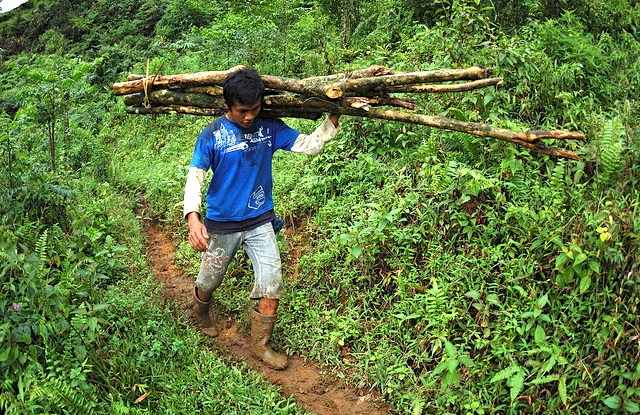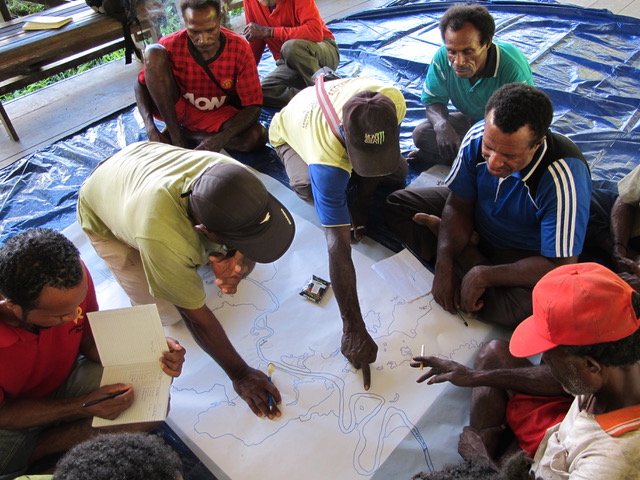
What if more forests could be saved – and carbon emissions thus lowered- if conservation projects strictly followed one basic rule: fairness?
That’s the contention of new research that looks at what Vietnam’s experience can teach REDD+, a major multi-country strategy designed to stop forests from being cut down and degraded.
“Most projects say they want to focus on being effective, efficient and equitable,” says Anastasia Yang, Senior Scientist on socio-ecological systems at the Thünen Institute, and former country-coordinator of the study at the Center for International Forestry Research (CIFOR).
“However, often there’s a trade-off where sadly equity is not prioritized – and that’s where problems begin. Without equity, you are not going to have people on board; you are not going to have accountability; and you are not going to have a truly efficient or effective outcome.”
LESSONS FROM VIETNAM
As part of a long-term and large-scale study on REDD+ by CIFOR, scientists from the Center teamed up with the Vietnam National University of Agriculture and the Vietnamese Academy of Forest Sciences.
Vietnam is home to a large variety of forests – ranging from mangroves to coniferous woodlands – which accounted for more than 40 percent of the country’s surface area back in the 1940s. After years of deforestation caused by illegal logging, land-clearing and conflict, concerted efforts since the 1990s have helped to increase forest cover.
The researchers examined eight projects in two provinces in the north of the country: Nghe An and Dien Bien. They wanted to learn what was working, and what was not, in schemes that aimed to actively protect forests- like providing cash incentives to local people to refrain from clearing wooded areas.
However, they also wanted to learn from projects that led to loss and damage of forests – like a rubber plantation and a hydro-power dam. Overall, they spoke with more than 100 people who could shed some light on how decisions were made about the land in each case, by whom, and why – ranging from government officials to NGOs to local people.
The study on multilevel governance was one of five worldwide, with research also undertaken in Peru, Indonesia, Tanzania and Mexico.
“We wanted to hear about the conditions that contributed to the success or failure of a policy – the opportunities and the weaknesses,” says Pham Thu Thuy, a scientist with CIFOR in Vietnam.
EXPLAINING EQUITY
As part of their research, the team undertook a thorough assessment of just how fair the projects were. To do that, they had to get specific.
“Equity is always mentioned,” says Yang. “But it’s not always defined.”
Using a model developed by Melanie McDermott and colleagues, the scientists aimed to clarify a term that is often perceived differently by different people. They assessed how decisions were made in each project – calling this ‘procedural equity’. They analyzed how costs and any benefits or incentives for local people were handled- calling this ‘distributive equity’. And, finally, they looked at ‘contextual equity’, analyzing the conditions on the ground affecting people’s ability to participate in a project.
“We discovered a huge amount of variation between the different case studies when it came to the three dimensions of equity, even among similarly-designed schemes,” says Yang.
CASH BENEFITS
Projects that provided direct cash benefits to local people to try to encourage them not to cut down forests were often found to be problematic, with poor distributive equity.
The payments were unreliable and were often considered too small to cover the costs incurred by local people. For the Payment for Forest Environmental Services (PFES) scheme, annual payments could be as low as $1.25 USD per household per year.
Furthermore, in many sites local people were never consulted about the kind of compensation they would receive. They were simply presented with a done deal. This lack of inclusion led to dissatisfaction, which put the intended outcomes of the project in jeopardy.
Schemes that provided such incentives were more successful when local people were fully-involved and there was more procedural and distributive equity. The SUSFORM-NOW REDD+ pilot project in Dien Bien province, run by the government with the support of the Japan International Cooperation Agency (JICA), was marked by strong communication between the provincial government and local people. This process helped to shape what kind of benefits and incentives were offered on the ground, thus improving the sustainability of the project.
“What this shows is that we need to see more consultation with local people and for the results of these consultations to be incorporated into policy and programs,” says Pham.
WHAT IS MISSING FROM REDD+?
However, the researchers also found that conservation projects must not focus solely on local people as the main drivers of deforestation, as many REDD+ projects have done.
Simply providing incentives and alternative livelihoods for communities via benefit distribution schemes is not enough to save forests. Other factors – like particular local circumstances and policy decisions – also have a direct and indirect impact on conservation, and these aspects also need to be addressed to ensure contextual equity.
The research findings highlight the crucial role that companies like rubber plantations and hydro-power plants play in the destruction of forests and suggest their impact must be more carefully assessed.
In one case study, communities agreed to a rubber plantation. However, the process took so long they were forced to cut down forest to meet their daily living needs. In another area, a hydro-power company caused forests to be cut down both through the construction of their site and also by relocating households.
The role of government is another major issue for REDD+ to consider. The study highlights weak coordination between agencies and a clash between national government priorities focusing on economic development and on local forest protection.
“We also found a lack of funding for provincial government and a limited capacity and ability for them to act on the ground,” says Pham.
Moreover, apparent loopholes in the legislation allow local governments to classify land as eligible for conversion to rubber production when reclassified as ‘degraded’.
Finally, widespread confusion and lack of clear mapping on who owns land must be taken into account by REDD+. The authors call for the process of classifying forest land to allow free, prior and informed consent and for the results to be clearly communicated.
NO EQUITY, NO RESULTS
Overall, the findings stress that every part of REDD+ should be fairer – from the genesis of each project, to what is included, to the process of making decisions.
Equally important is examining how any benefits or incentives are distributed and considering the deeper context of the areas selected for projects and programs.
“If projects want to meet their objectives, equity has to be incorporated into the design,” says Yang. “That requires resources and time. Without it, you are never going to achieve the results you intended.”
We want you to share Forests News content, which is licensed under Creative Commons Attribution-NonCommercial-ShareAlike 4.0 International (CC BY-NC-SA 4.0). This means you are free to redistribute our material for non-commercial purposes. All we ask is that you give Forests News appropriate credit and link to the original Forests News content, indicate if changes were made, and distribute your contributions under the same Creative Commons license. You must notify Forests News if you repost, reprint or reuse our materials by contacting forestsnews@cifor-icraf.org.

